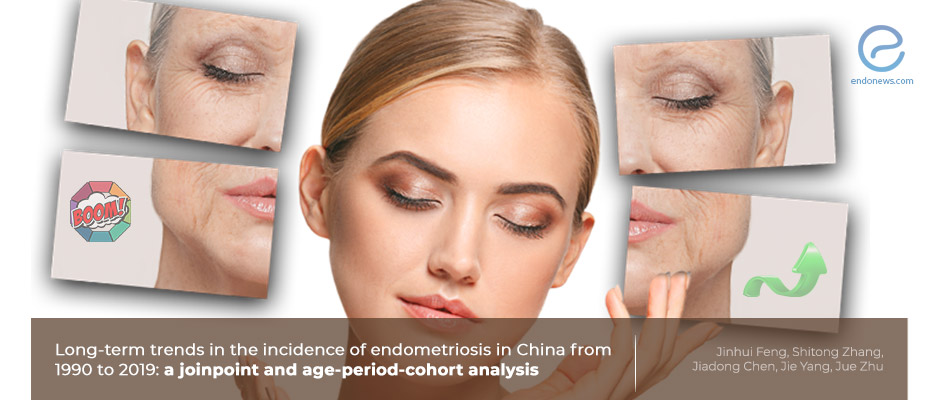The incidence of endometriosis may vary over time according to age, period and cohort
Sep 29, 2021
The effect of age on endometriosis incidence showed an increasing trend before the age of 24.
Key Points
Highlights:
- The most important variable predicting the frequency of encountering endometriosis is age, depending on the age-period-cohort analysis.
Importance:
- While creating social awareness, women should be informed that the incidence of endometriosis may be affected by age, cohort, and period.
What’s done here?
- This study evaluates the change in the incidence of endometriosis over time.
- The impact of age, period and cohort on the incidence of endometriosis were assessed.
- Patients were divided into 5-year age groups from 15–19 to 50–54 years, 5-year periods from 1990–1994 to 2015–2019, and 5-year birth cohorts from 1938–1942 to 1998–2002.
- Relative risks were estimated using joinpoint regression in the age–period–cohort model.
Key results:
- The effect of age on the incidence of endometriosis showed a significant decrease for all age groups.
- The highest risk for endometriosis was observed in the age groups from 15–19 to 20–24 years, which decreased with advancing age after the age of 44.
- When the period effect was evaluated, the rate for the incidence of endometriosis declined with time for all age groups.
- The decline in the risk of endometriosis was observed from the earlier to later birth cohorts.
- The peak for the risk of endometriosis incidence was found to be in the cohort born in 1943–1947.
Strengths and Limitations
- Being the first paper to evaluate the age, period, and cohort effects on the incidence of endometriosis in China is the most important strength of this study.
- Failure to evaluate the difference about the trends in endometriosis incidence between urban and rural areas in China, inability to assess on a personal basis, and inherent limitations of age–period–cohort analyses including identifiability problems and the uncertainty principle could be accepted as the limitations of the study.
Lay Summary
Endometriosis is an estrogen-dependent gynecological disease mostly encountered in reproductive-aged women. Early diagnosis has importance as endometriosis impairs the quality of life of patients and creates a serious social and economic burden. Fortunately, earlier diagnosis and management of endometriosis becomes possible due to societal, economic, and technological developments.
To investigate trends in the incidence of diseases and to evaluate the effects of age, period, and cohort on these trends, age–period–cohort analyses are performed. Feng et al, from China, published a study entitled “Long-term trends in the incidence of endometriosis in China from 1990 to 2019: a joinpoint and age–period–cohort analysis” in the journal "Gynecological Endocrinology".
The authors sought to evaluate the effects of several parameters such as age, period, cohort; on the incidence of endometriosis in China between 1990 and 2019. They observed a significant decrease for all age groups, especially in young women aged 15–24 years, which then decreased with advancing age. Apparently, endometriosis is a reproductive-age disease. The rate for the incidence of endometriosis declined with time for all age groups. Several social, personal, and environmental factors were thought to play a role in this period effect.
The decline in the risk of endometriosis was observed from the earlier to later birth cohorts. For this cohort effect, improvements in public health policy, treatment of medical conditions, and implementation of endometriosis screening were effective.
“Both period and birth cohort has a negative correlation with endometriosis incidence among all age groups. Age was the most important factor in determining the risk of endometriosis. Effective interventions should be adopted to reduce the risk of endometriosis specifically in younger age groups.” the authors added.
Research Source: https://pubmed.ncbi.nlm.nih.gov/34519590/
endometriosis incidence joinpoint regression age–period–cohort trends

